Ancient Middle East, history of the region from prehistoric times to the rise of civilizations in Mesopotamia, Egypt, and other areas. The high antiquity of civilization in the Middle East is largely due to the existence of convenient land bridges and easy sea lanes passable in summer or winter, in dry or wet seasons. Movement of large numbers of people north of the Caspian Sea was virtually impossible in winter, because of the severity of the climate, and central Eurasia was often too dry in summer. Land passage between Asia and Africa was in early times limited to narrow strips of land in the Isthmus of Suez. Large-scale desert travel was limited to special routes in Iran and in North Africa, both east and west of the Nile valley.
The history of the ancient Middle East, often referred to as the "Cradle of Civilization", unfolds as a captivating tapestry of human achievement, innovation, and cultural evolution. Encompassing a vast and diverse region that stretches from the Nile River in Egypt to the Tigris and Euphrates rivers in Mesopotamia, the ancient Middle East served as the crucible where some of humanity's most remarkable achievements took root.
In the millennia before the Common Era, the ancient Middle East bore witness to the birth of the world's earliest civilizations. Along the fertile banks of the Nile, the mighty Egyptian civilization emerged, boasting awe-inspiring pyramids, complex hieroglyphic writing, and an enduring reverence for the afterlife. Meanwhile, in the land of Mesopotamia, the Sumerians, Akkadians, and Babylonians laid the foundations for urban life, legal codes, and intricate cuneiform script. These early societies set the stage for an unprecedented era of innovation and cultural exchange.
The history of the ancient Middle East is punctuated by the rise and fall of powerful empires and kingdoms. The Assyrians and Persians expanded their dominions through military conquests, while the Phoenicians and Minoans became influential maritime traders, disseminating goods and ideas across the Mediterranean. The Persian Empire, under the leadership of Cyrus the Great, famously embraced religious tolerance and human rights, leaving a lasting legacy of administrative excellence.
This region was also a vibrant cultural melting pot where art, literature, and philosophy thrived. The epic of Gilgamesh, the poetry of Sappho, and the wisdom of Confucius found their roots here, influencing generations of thinkers and writers. Cities like Babylon, Nineveh, and Persepolis were renowned for their architectural splendor and artistic achievements.
The ancient Middle East gave birth to several major world religions. Zoroastrianism emerged in Persia, while the monotheistic faiths of Judaism, Christianity, and Islam trace their roots to this region. The story of Abraham's journey, the teachings of the Hebrew prophets, and the life of Muhammad are deeply intertwined with the sacred landscapes of the Middle East.

The history and archaeology of ancient Babylon, located in the region of Mesopotamia (modern-day Iraq), represent a significant chapter in the story of human civilization. Babylon was one of the most influential and well-known cities of the ancient world, renowned for its architecture, culture, and role in shaping the history of Mesopotamia. Read more
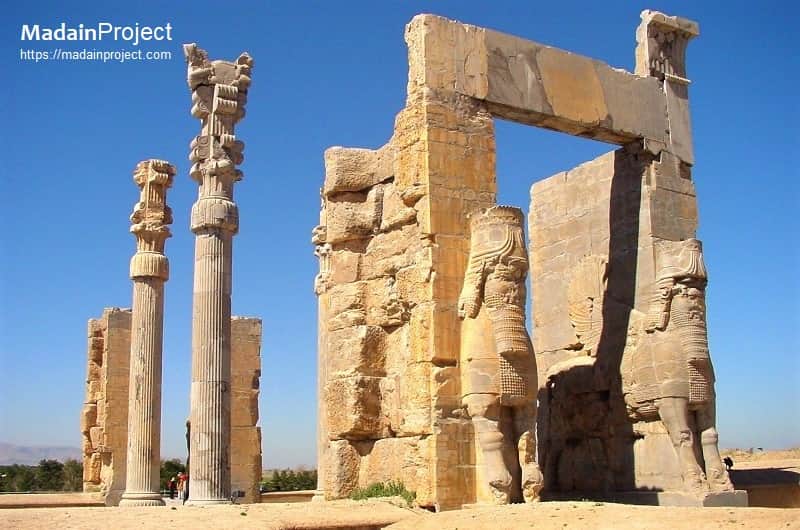
This remarkable chapter in human history, shaped by the rise and reign of the Achaemenid Empire, showcases the birth of a powerful and influential empire that left an indelible mark on the ancient world. The Persian civilization emerged from the annals of prehistory and evolved into a vast empire that stretched from the Mediterranean to the Indus River. Read more

Ancient Arabian civilization refers to the complex and diverse cultures that thrived on the Arabian Peninsula long before the emergence of Islam. This rich history spans thousands of years and encompasses various tribes, kingdoms, and empires. Archaeological evidence indicates that early humans inhabited the region around 1.2 million years ago. Read more

Spanning over three millennia along the banks of the Nile River, Egypt's rich past is marked by incredible achievements in culture, science, architecture, and governance. Egypt's history is traditionally divided into dynastic periods. Archaeological findings include the tombs of the early pharaohs at Abydos, Hierakonpolis, and Saqqara, displaying the first examples of monumental architecture and hieroglyphic writing. Read more

The history and archaeology of ancient Israel and Palestine are deeply intertwined, spanning thousands of years, this history is marked by significant events, religious developments, and cultural transformations. The history and archaeology of ancient Israel and Palestine offer a rich tapestry of cultures, religions, and historical events. Archaeological excavations continue to unearth new evidence that enhances our understanding. Read more

Persepolis, located in modern-day Iran, was the ceremonial capital of the Achaemenid Empire, one of the most influential and powerful empires of the ancient world, built to celebrate the empire's glory. Its history and archaeology offer profound insights into the culture, art, and achievements of ancient Persia. Persepolis, characterized by grand palaces and monumental staircases, was founded by Darius the Great, who ruled the Achaemenid Empire from 522 to 486 BCE. Read more
The "works" demonstrate specific geometric patterns and extend from a few tens of meters up to several kilometers, evoking parallels to the well-known system of geometric lines of Nazca, Peru. In comparison the Nazca Lines in Peru are dated between 200 BCE and CE 500). These occur throughout the entire Arabia region, from Syria across Jordan and Saudi Arabia to Yemen. Archaeological studies indicate that some of the wheels date back to circa 8,500 years, a prehistoric time when the climate was wetter in parts of the Middle East.
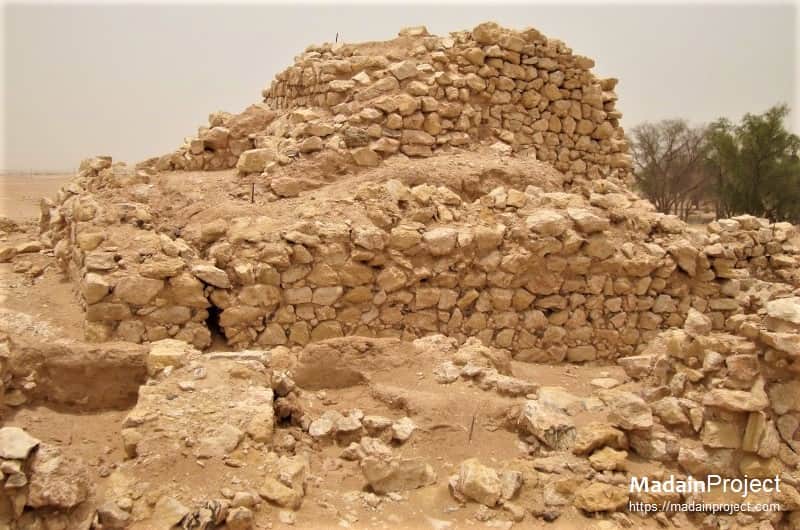
Located on the southeastern tip of the Arabian Peninsula, Oman has been a crossroads of cultures and a center of trade for thousands of years. The history and archaeology of ancient Oman unfold as a captivating tale of a land deeply connected to maritime trade, cross-cultural interactions, and the enduring legacies of several great civilizations. Read more

The history and archaeology of ancient Saudi Arabia unveil a complex and diverse narrative that spans millennia, revealing a land of great historical and cultural significance. As the cradle of Islam and home to several ancient civilizations, including the Nabateans and the kingdoms of Arabia, Saudi Arabia's past is rich and multifaceted. Read more
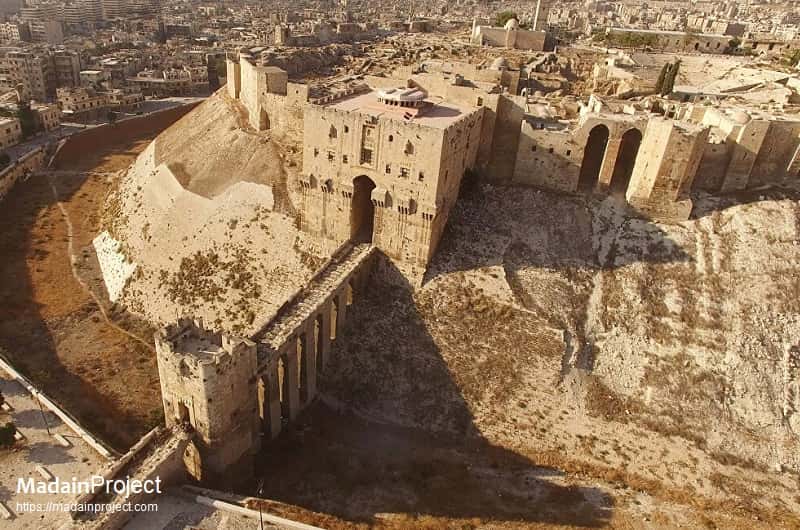
Ancient Syria, which includes present-day Syria and parts of modern-day Lebanon, Jordan, and Turkey, has been home to some of the world's oldest and most influential civilizations. Modern archaeological excavations in Syria have uncovered a wealth of historical sites and artifacts, providing insights into its ancient history. Read more
The "Gate of All Nations," also known as the "Gate of Xerxes" or "Gate of Darius," was a prominent architectural feature of the ancient Persian city of Persepolis. Persepolis, located in modern-day Iran, served as the ceremonial capital of the Achaemenid Empire during its zenith in the sixth and fifth centuries BCE. The Gate of All Nations was one of the main entrances to the city and was situated in the eastern wall of the terrace upon which Persepolis was built.

The history and archaeology of ancient Anatolia, which is modern-day Turkey, is a story of remarkable civilizations, diverse cultures, and significant historical events that have shaped this region for thousands of years. Anatolia is often considered one of the world's earliest centers of human civilization. Read more

This region, strategically located at the crossroads of the Middle East, has been home to numerous civilizations and has witnessed significant historical developments. Jordan's archaeological record reveals evidence of human habitation dating back to the Paleolithic period, with findings such as flint tools and rock shelters. Jordan's archaeological sites, including Petra, Jerash, Amman, and others, offer a glimpse into the region's storied past. Read more

The ancient city of Assur, also known as Ashur, holds a pivotal place in the annals of Mesopotamian history. Situated on the western bank of the Tigris River in present-day Iraq, Assur was the political, religious, and cultural epicenter of the Assyrian civilization. With roots stretching back to the third millennium BCE, Assur emerged as a significant urban center during the early Bronze Age. Read more
The Tomb of Cyrus the Great (who ruled from 559 to 530 BCE) is an ancient funerary monument located near the ancient city of Pasargadae in modern-day Iran. It is one of the most significant archaeological sites in Iran and holds historical and cultural importance as the resting place of Cyrus II, commonly known as Cyrus the Great. The tomb's construction is attributed to Cyrus, and its location signifies his connection to Pasargadae and his desire for a simple burial.

Nimrud was founded by Shalmaneser I, an Assyrian king, in the thirteenth century BCE. It became the capital of the Assyrian Empire under the reign of Ashurnasirpal II. The city reached its peak during the ninth and eighth centuries BCE and was known for its impressive architecture, including palaces, temples, and fortifications. Read more

Ancient Hatra, located in present-day Iraq, was a prominent city of the Parthian Empire and later the capital of the first Arab kingdom. The city, established around the 3rd or 2nd century BCE, thrived as a major trading hub on the Silk Road, connecting the Roman and Persian worlds. Hatra's unique position allowed it to extensively prosper economically and culturally. Read more
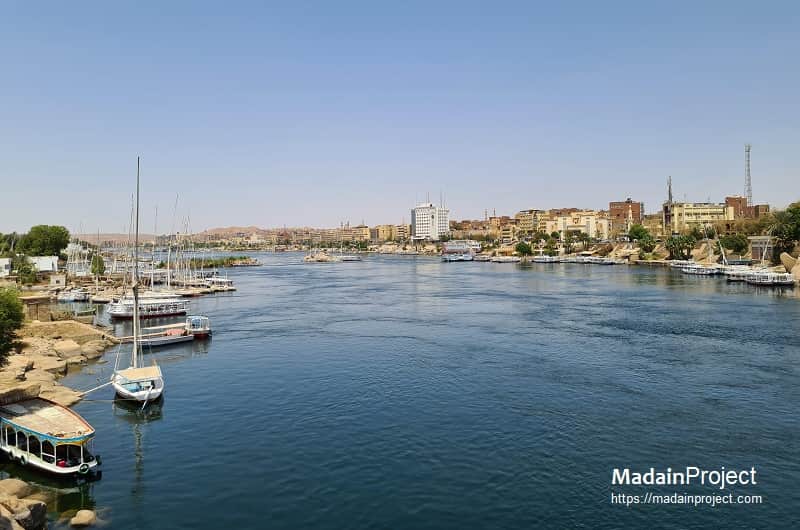
Historically, Nile water was excellent for irrigation because the annual flood deposited nutrient-rich silt that renewed soil fertility. This is what allowed Egypt and Nubia to sustain intensive agriculture in otherwise desert zones. In the modern period, after the Aswan High Dam ended the natural flood cycle. Read more
The Roads of Arabia exhibition delves into the historical and cultural evolution of Arabia, starting from early human history. It explores ancient incense trade routes and early-Islamic pilgrimage roads that linked Arabia with regions like Iraq, Syria, Egypt, and the Mediterranean. The exhibition provides valuable insights into the cultural exchanges between Arabia and its varied neighbors. Among the intriguing findings is the al-Hamra cube, showcasing the blend of Egyptian and Mesopotamian motifs in local religious practices. Additionally, everyday items displayed reflect a fascinating amalgamation of languages and artistic styles, revealing the diverse cultural interactions in the region.

Bahrain, a small but historically rich island nation in the Arabian Gulf, stands as a testament to the ancient civilizations that once thrived in the region. Apart from the Bahrain Fort, with its layers of history dating from the Dilmun civilization to the Islamic era, the island is adorned with burial mounds like those in A'ali, showcasing the ancient burial customs of the Dilmun people. Read more

Cyprus, the storied island in the Eastern Mediterranean, boasts an archaeological heritage that reflects the island's significance in the ancient world. With a history spanning over 10,000 years, Cyprus has been home to various civilizations, including the Neolithic settlers, ancient Greeks, Romans, Byzantines, and Crusaders, with one of the most iconic archaeological sites is Kourion. Read more

Iraq, often referred to as the cradle of civilization, boasts an archaeological heritage that stretches back millennia. The land that was home to ancient civilizations such as Sumeria, Babylon, and Assyria has provided archaeologists with a treasure trove of discoveries, illuminating the complex and fascinating history of the region. Read more
The Barbar Temple refers to a historical site in Bahrain known as the Barbar Temple Complex. It is an archaeological site located on the northern coast of Bahrain, near the village of Barbar. These temples are believed to be associated with the worship of Enki, the Sumerian god of wisdom and water. The Barbar Temple Complex provides valuable insights into the history and religious practices of the ancient Dilmun civilization in Bahrain. It has been recognized as a UNESCO World Heritage Site, contributing to the preservation of Bahrain's rich cultural heritage.
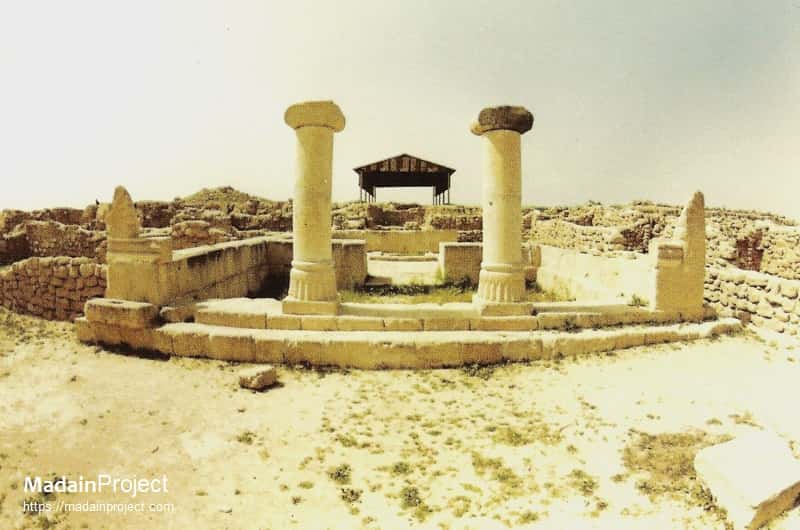
Kuwait, a small yet historically rich country nestled at the northern edge of the Arabian Peninsula, boasts a fascinating archaeological heritage that traces back tens of centuries. Kuwait's archaeological history is intertwined with its strategic location along ancient trade routes, serving as a crossroads for merchants, travelers, and cultures throughout history. Read more

From Phoenician city-states to Roman ruins and Crusader castles, Lebanon's archaeological landscape is a treasure trove waiting to be explored. One of the most remarkable aspects of Lebanese archaeology is its ability to showcase the continuity of human habitation over thousands of years. The country's capital, Beirut is built atop layers of ancient civilizations. Read more

Archaeology in Qatar has revealed evidence of human habitation dating back to the Bronze Age, showcasing the enduring connection between its inhabitants and the land. Excavations have unearthed settlements, burial sites, and artifacts, offering valuable insights into the daily lives, traditions, and trade practices of ancient Qatari communities. Read more
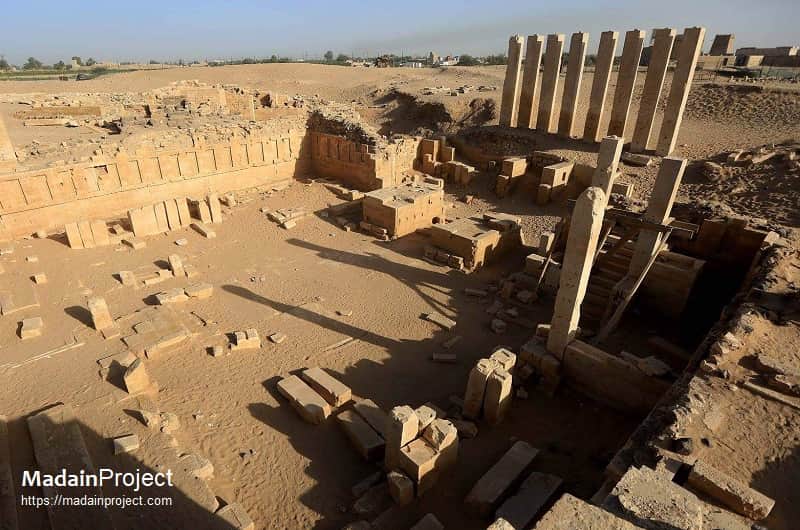
Situated in the southern part of the Arabian Peninsula, Yemen's archaeological sites whisper tales of ancient civilizations, trade routes, and remarkable cultural exchanges that span thousands of years. The history of archaeology in Yemen is as diverse as the civilizations that once flourished there. From the awe-inspiring ruins of the ancient city of Saba, often associated with the biblical kingdom of Sheba, to the remnants of medieval cities like Zabid and Shibam. Read more

Archaeology in the United Arab Emirates (UAE) unveils a captivating tapestry of history, where ancient civilizations have left their mark on the landscape, shaping the rich heritage of the region. The archaeological explorations in the UAE have not only revealed the region's pre-Islamic past but also shed light on the diverse cultures that once thrived here. Read more
Signup for our monthly newsletter / online magazine.
No spam, we promise.